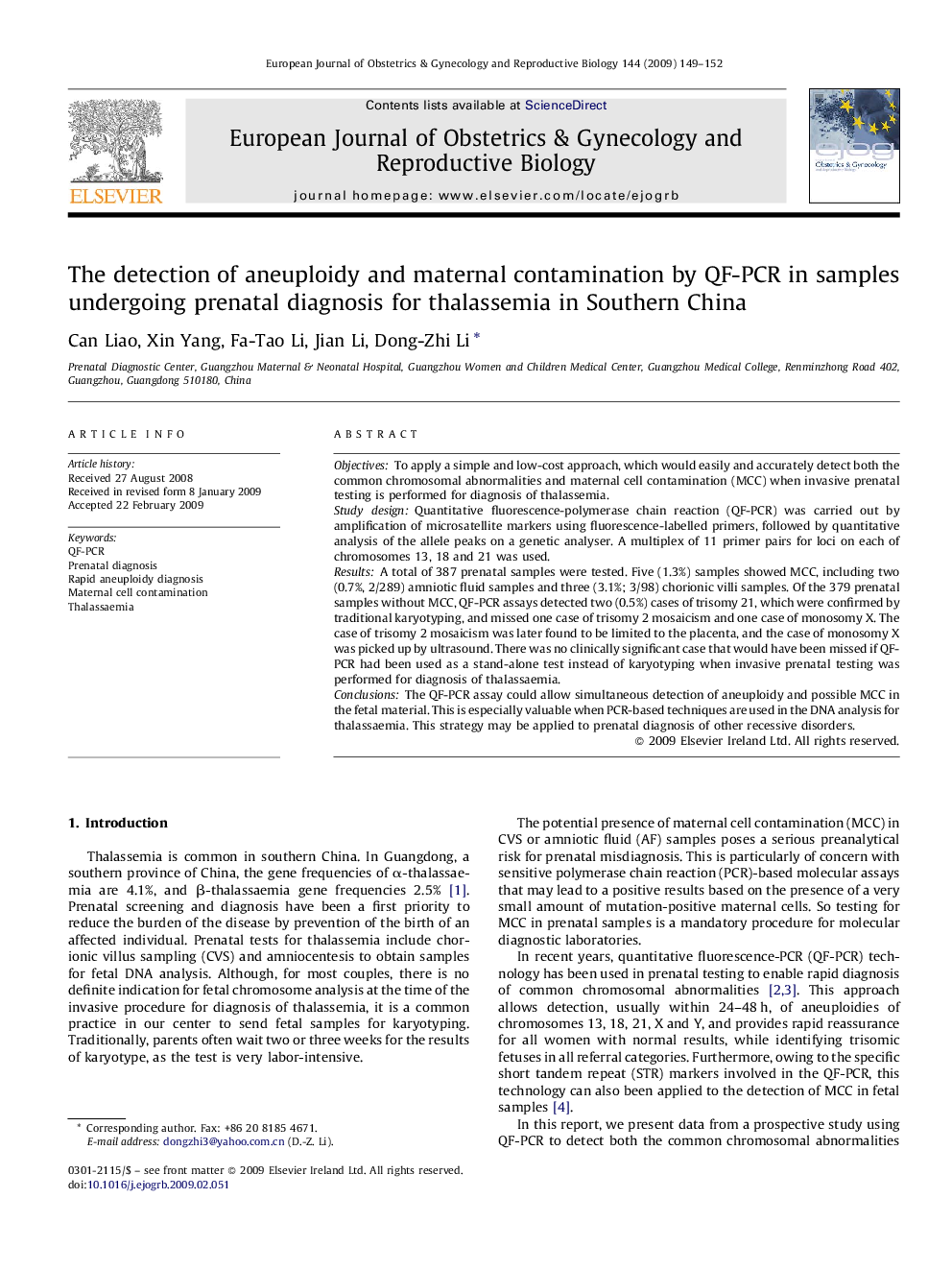| Article ID | Journal | Published Year | Pages | File Type |
|---|---|---|---|---|
| 3921240 | European Journal of Obstetrics & Gynecology and Reproductive Biology | 2009 | 4 Pages |
ObjectivesTo apply a simple and low-cost approach, which would easily and accurately detect both the common chromosomal abnormalities and maternal cell contamination (MCC) when invasive prenatal testing is performed for diagnosis of thalassemia.Study designQuantitative fluorescence-polymerase chain reaction (QF-PCR) was carried out by amplification of microsatellite markers using fluorescence-labelled primers, followed by quantitative analysis of the allele peaks on a genetic analyser. A multiplex of 11 primer pairs for loci on each of chromosomes 13, 18 and 21 was used.ResultsA total of 387 prenatal samples were tested. Five (1.3%) samples showed MCC, including two (0.7%, 2/289) amniotic fluid samples and three (3.1%; 3/98) chorionic villi samples. Of the 379 prenatal samples without MCC, QF-PCR assays detected two (0.5%) cases of trisomy 21, which were confirmed by traditional karyotyping, and missed one case of trisomy 2 mosaicism and one case of monosomy X. The case of trisomy 2 mosaicism was later found to be limited to the placenta, and the case of monosomy X was picked up by ultrasound. There was no clinically significant case that would have been missed if QF-PCR had been used as a stand-alone test instead of karyotyping when invasive prenatal testing was performed for diagnosis of thalassaemia.ConclusionsThe QF-PCR assay could allow simultaneous detection of aneuploidy and possible MCC in the fetal material. This is especially valuable when PCR-based techniques are used in the DNA analysis for thalassaemia. This strategy may be applied to prenatal diagnosis of other recessive disorders.
